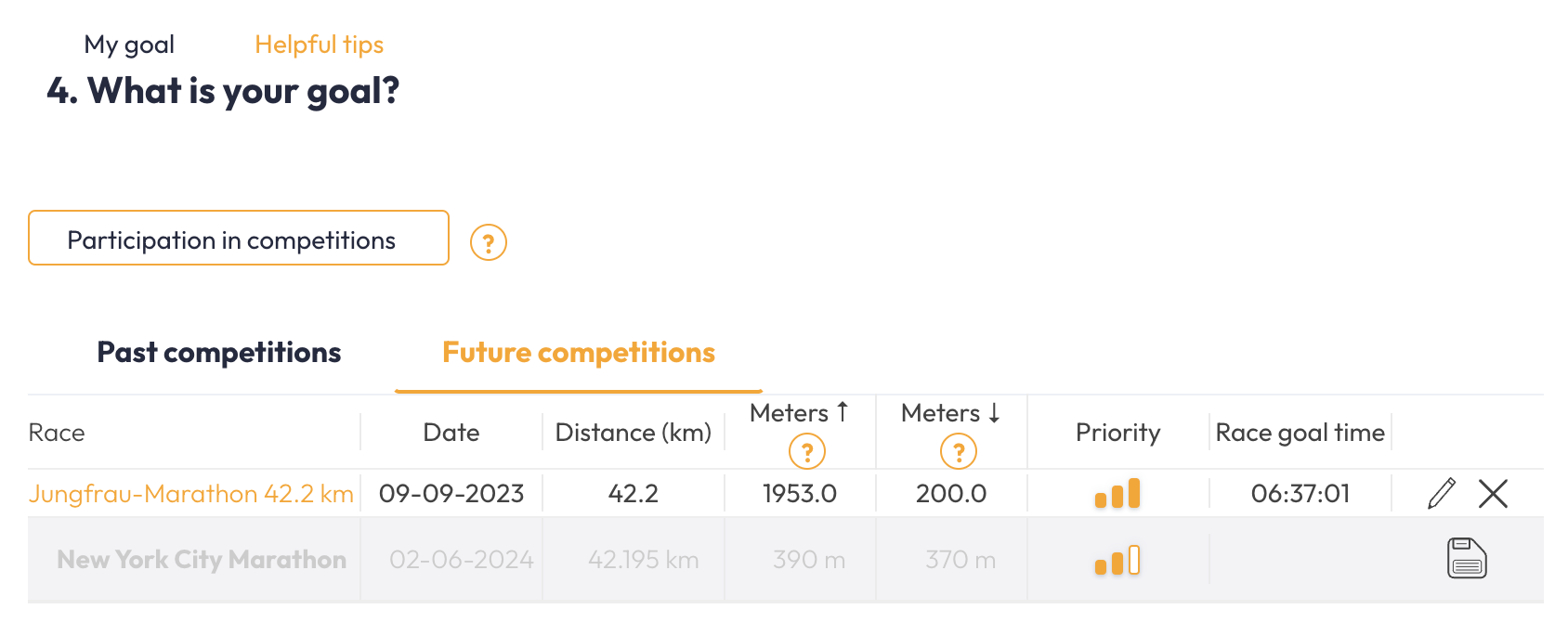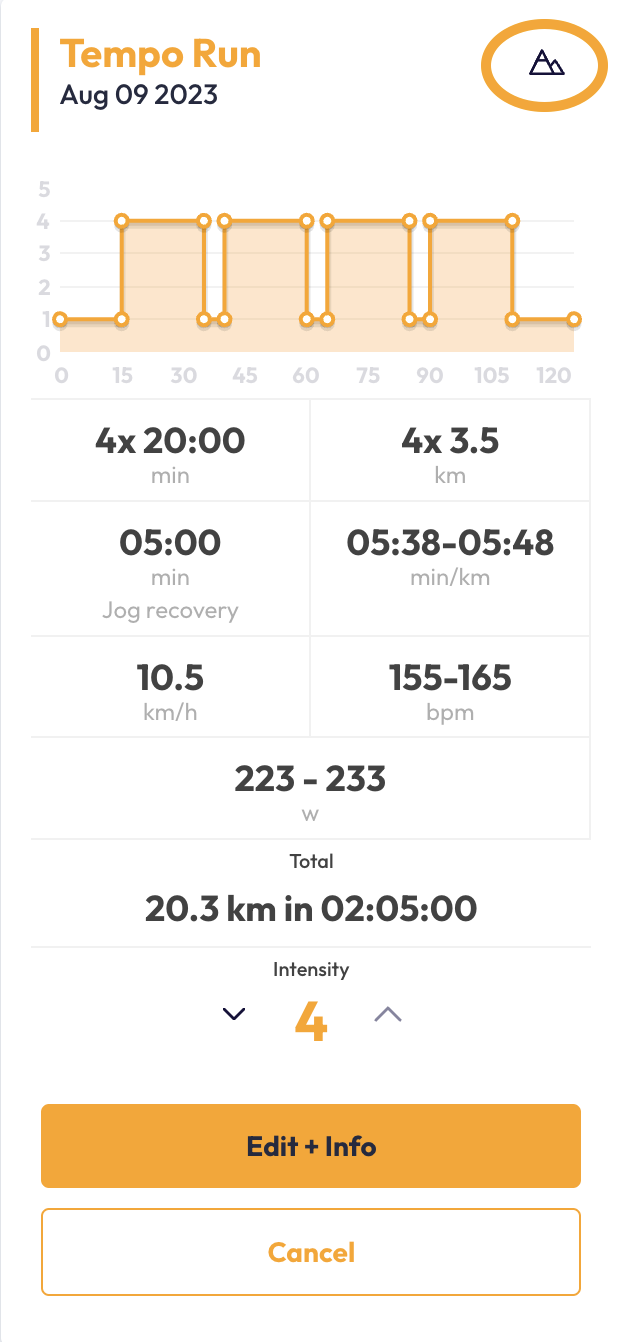Mountain running, hill running and generally training with a lot of altitude gain are efficient training methods to optimally train and strengthen both the muscles and the cardiovascular system. Mountain running training helps you to develop your strength, endurance and resistance and thus to be able to run on the flat with a powerful stride.
The advantages of mountain running training
There are several differences when comparing interval training in the mountains with running on flat. For example, uphill running requires a different body position which leads to a different load on the gluteal, front thigh and the back muscles. This results in a “new” training stimulus. It also requires a stronger push off the forefoot, which in turn puts additional strain on the calf muscles.
An additional advantage is the decreasing force acting on the musculoskeletal system as the gradient increases. When running uphill, the height of fall with each stride and thus the force on the foot landing is reduced. Mountain or hill running is therefore also a gentle way to run and is ideal especially after injuries or as an additional unit in the running training plan.
Learn more about the 7 benefits of hill training.
Plan your mountain running training
The question of how to become a better mountain runner can be answered relatively simply: by training on the mountain. That means that if we prepare for a mountain run, mountain marathon or trail running race, we have to train in the appropriate terrain. Even if this sounds obvious, this fact is easily forgotten in everyday training or is often not easy to implement due to geographical conditions.
So it is more important to train in the mountains in an optimal way. If it is not possible at home, you can combine this with a weekend excursion or with a training camp in the mountains.
Mountain training in running.COACH
On the running.COACH training plan you can enter your target competitions in the settings. If your target competition is a mountain race (e.g. Jungfrau-Marathon) and is also entered as the main competition (highest priority), running.COACH will automatically suggest which training sessions you should do in the mountains.

The trainings which should be done specifically uphill are marked in the plan with the mountain running symbol. These are noted when, from running.COACH’s point of view, a mountain running training is optimal. Of course, you can also do more training on the mountain and in hilly terrain. If the circumstances (place of residence in the flat country, weather or other circumstances) make it impossible, these trainings can also be done in the flat. However in general, in preparation for a mountain run, at least 2 training sessions per week, but a maximum of half of all units, should be done with a lot of incline.
In the training description, under “Goal & Purpose,” you will also find a specific training tip for each session – tailored to the planned workout and the stage of preparation.

Pace setting, intensity and duration
The pace settings in running.COACH always refer to flat tracks. Since running.COACH cannot know how steep your training route will be, it is not possible to run pace and distance in mountain training. The easiest way is to train according to your heart rate and duration instead. Only for short interval training is the method according to pulse not suitable because of the delayed reaction to the increase in intensity. In this case, run as fast as you can – with the restriction that the pace should be kept at the same level over all intervals. Of course, this requires practice and experience in order not to lie exhausted on the side of the road after half of the intervals.
Further guidelines for speed control are feeling and the following rules of thumb, which can be described as these different training forms:
- Jogging/regeneration/endurance run 1: Speaking is possible at any time without problems. A conversation can be held like at home at the kitchen table.
- Endurance run 2: Speaking should be possible in whole sentences, but not permanently.
- Medium speed: Short sentences should be possible.
- Interval: In the fastest training form, communication is only possible with short remarks and statements: “Yes”, “No”, “Stop”. Instead, hand signals are used for communication.
Afterwards, the run pace can be optimally controlled in running.COACH using the height-corrected GAP value (converts the run pace to a flat distance).
The defined duration of the entire training or the individual interval workouts is only determined by time on the mountain. The total duration of a training session may be a little longer than the default value in running.COACH for mountain training. This is because running on the mountain is gentle and the impact on the body is correspondingly less.
Mountain running technique
When running uphill, running technique falls into the background. A dynamic running like on the track is often no longer possible and the running technique and economy play a subordinate role. Nevertheless, there are a few points on which one should focus:
- Walking upright – Try to push your hips forward and straighten the upper body.
- Looking forward – Don’t look directly at the ground in front of your feet, but continue to look ahead. This also helps to walk upright.
- Arm deployment – With the higher knee stroke the arm work automatically becomes more pronounced. And that is exactly what is important. Make sure you keep your shoulders and arms relaxed and let your wrists pass close to your hips as you swing. The impulse of the pendulum movement should go backwards.
- Fast walking/power walking – Depending on the steepness of the path and your personal level, running is no longer possible even on small inclines without being immediately overexerted. For this reason, you can and should also switch to brisk walking or power walking. Especially in competitions, it is very sensible to switch to walking in order not to have missed the mark after only a few meters of altitude. By the way, even professional mountain runners change their step more often and are therefore not slower than others. But power walking also needs to be practiced!
Last but not least
- On every hill there is usually also a wonderful view. Enjoying this is a must!
- A mountain running training can end on the mountain, but does not have to. In everyday life, training in hilly terrain is the norm. Running downhill also requires practice and brings a special additional benefit. More tips on this in our blog post ‘Trailrunning with the right technique‘.
Hill Running Technique – 4 Tips
When running uphill, the aspect of running technique takes a backseat. Dynamic running as on flat terrain is often not possible, and the technique and efficiency of running become less relevant. However, there are some points to focus on:
- Body posture: Keep your upper body upright and push your hips forward to maintain good posture.
- Gaze direction: Don’t look directly at the ground in front of your feet; instead, look further ahead to support your body posture.
- Arm movement: Pay attention to maintaining relaxed arms and let your wrists swing close to your hips. The impulse of the arm movement should go backward.
- Fast walking/Powerwalking: On steep climbs or when fatigued, fast walking or powerwalking is a sensible alternative to running. Even professional hill runners often switch between steps to save energy.
Hill running training also includes downhill running
Whoever runs uphill will eventually have to go downhill. And downhill running, in terms of running technique, should not be underestimated. It puts more strain on your thighs, knees, and ankles than running on flat terrain and requires a high level of balance and coordination.
To improve downhill running technique, it is advisable to take conscious steps with a shorter stride length, shift your center of gravity forward, adopt a wider running stance on technically challenging descents, and actively use your arms. Even breathing and a forward-looking gaze are also helpful in making downhill running more efficient and safer.
And finally
- On every hill, there’s usually a wonderful view waiting for you. Enjoy it.
- A hill running training session can end on the mountain, but it doesn’t have to. In everyday life, training in hilly terrain is usually the norm. Downhill running also needs to be practiced and offers a special additional benefit. More tips in our blog post “Trail Running with the Right Technique.”
Create a personalized and dynamic training plan with running.COACH that, starting from your current fitness level, will prepare you optimally for your running goals. Try running.COACH for free for two weeks after the first login!
Authors of this blog post: Jonas Merz and Gabriel Lombriser



